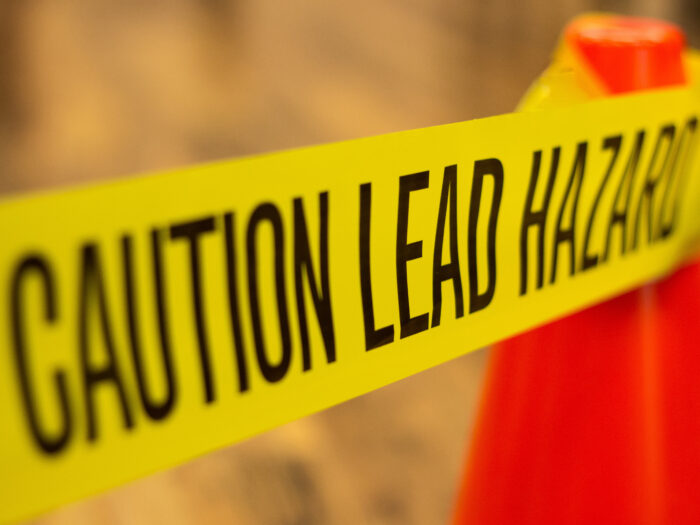Sponsored Content by Concentra
Why Employers Should Go Above and Beyond OSHA’s Lead Monitoring Standards

Every year, millions of people are exposed to harmful levels of lead. The CDC estimates that more than half of Americans — at least 170 million people — were exposed to unsafe levels of lead in early childhood, demonstrating how prevalent this risk remains.
In adults, lead poisoning can cause high blood pressure, neurological issues and damage to the kidneys and reproductive systems. Symptoms may include muscle and joint pain, fatigue, headaches, stomach cramps and irritability. Lead poisoning is an even greater danger to children and pregnant women. Children may experience lasting effects on growth and development, including behavioral problems and speech impairments. Fetuses exposed to high levels of lead in the womb can also experience these effects and are at increased risk of premature birth.
For most people, lead exposure happens when the metal leaches into the water supply from old pipes, or when lead-based paint starts to flake off. But for some, lead exposure is an everyday occupational hazard.
Lead Exposure as Occupational Hazard

Dr. Ronda McCarthy, National Medical Director, Medical Surveillance Services at Concentra
“The United States is one of the largest producers of lead in the world, so there is a lot of historical lead found in older structures and materials, where it was prevalent before the serious health effects were realized. Construction workers renovating old buildings can be exposed if those materials are disturbed,” said Dr. Ronda McCarthy, national medical director, medical surveillance services at Concentra.
“But lead is still used in ammunition and batteries. There’s some glass manufacturing that utilizes lead. Any welding work involving lead generates dangerous fumes. Lead exposure can occur not only in the production of lead-containing materials but also in their use, repair or recycling. So, there are multiple industries where the threat of lead exposure is very real.”
Exposed workers can also endanger family members by bringing lead dust back home on their clothes.
Currently, OSHA requires employers to remove workers from lead exposure and ensure they receive treatment when their blood lead level (BLL) reaches 60 micrograms per deciliter. This is considered a toxic level of lead, and the worker will require medications that help to absorb the excess lead. Health effects can start to appear at levels as low as five micrograms per deciliter.
“The expectation is that you would hospitalize that person and provide them a treatment to remove the toxic level of lead out of their body, versus removing an employee at lower elevated levels, such as 20 to 30 µg/dl and monitor for early health effects like a high blood pressure or kidney dysfunction. It’s like waiting for a car to break down rather than getting regular maintenance,” McCarthy said.
Regulatory Versus Medical Standards for Lead Monitoring: What Should Employers Do?
The current OSHA standard was implemented in the 1970s. In June 2023, OSHA did put forth an advanced notice of proposed rulemaking which would reduce the BLL needed to trigger worker removal from lead exposure. This updated standard is likely to take months or perhaps years to make it to final approval and implementation.
“There is significant morbidity associated with lead levels under the current standard. So, while that standard goes through the process of being updated, the expectation is that employers will follow current medical standards, such as guidelines developed by the American College of Occupational and Environmental Medicine, ACOEM,” McCarthy said.
If air monitoring around a worksite confirms the presence of lead, ACOEM’s standards call for:
- Baseline medical evaluation of exposed workers that includes blood pressure, renal function, blood cell counts, baseline blood lead level (BLL) and overall general health.
- For construction workers, monitoring of BLL every two months for the first six months, then every six months thereafter. For general industry workers, these levels should be monitored every six months after the initial exam.
- A BLL of 20 micrograms per deciliter triggers increased monitoring — testing every month rather than every two months. Two levels of 20 or higher triggers worker removal from lead exposure.
- A BLL of 30 µg/dl or higher triggers immediate worker removal from lead exposure.
- If the workers do not have any health effects, they may resume regular duties once their BLL drops below 15 micrograms per deciliter.
For a pregnant worker, a BLL of 10 or higher triggers immediate removal. Recommendations are no lead exposure until the BLL drops below 5µg/dl.
The Benefits of Early Intervention
These more stringent standards help prevent a worker’s BLL from reaching toxic levels requiring hospitalization. This saves the employer from having to report the event to OSHA and avoids an expensive workers’ comp claim.
Earlier intervention also keeps workers healthier and, ultimately, reduces the risk that lead toxicity will incur other claims.
“The neurologic symptoms of lead toxicity can be pretty subtle. But if a worker isn’t thinking clearly, they could have accidents on the job and potentially cause accidents or injuries to other workers. If the lead starts to affect other organs, you’re looking at higher health insurance claims as well. You may see family members start to fall ill, and there may be an additional liability component there. So, there are cascading effects of allowing a BLL to reach toxicity,” McCarthy said.
In addition to stricter monitoring and earlier action, employers can also prevent lead toxicity by following safety practices, such as providing respirators, encouraging regular handwashing and providing facilities on site where workers can shower and change their clothes before heading home.
“We can spare a lot of health issues for workers and a lot of costs for employers just by following these best practices,” McCarthy said.
Trust in Occupational Health Expertise
Concentra helps employers achieve these benefits by adhering to ACOEM’s standards at every clinic across the country, ensuring not just up-to-date medical surveillance but also consistency of care.
Concentra’s medical experts also continue to consult with OSHA on hazardous exposures and medical surveillance while the organization’s regulations are updated. This ensures that Concentra is able to keep employers informed about changing regulations and clarify the expectations surrounding worker health and workplace safety best practices.
“We understand that more frequent testing can come with a higher cost for employers, but at the end of the day, it is simply good risk management. Let us act at these lower lead levels to avoid hospitalization, avoid an OSHA-reportable event, and avoid a costly workers’ comp claim. Getting ahead of lead toxicity is well worth the additional cost of increased monitoring,” McCarthy said.
“And more importantly, it prioritizes the health of the worker, sparing them long-lasting effects on their neurologic, bone marrow, kidney, and the brain etc.”
Concentra consultants can also help an employer identify lapses in safety measures that might be contributing to lead exposure and make recommendations on practices to prevent a recurrence and protect other workers on site.
The goal of ACOEM’s standards — and Concentra’s clinicians — is to prevent serious illness or injury, a mission from which employers, workers and workers’ families all benefit.
To learn more, visit https://www.concentra.com/occupational-health/occupational-medicine
This article was produced by the R&I Brand Studio, a unit of the advertising department of Risk & Insurance, in collaboration with Concentra. The editorial staff of Risk & Insurance had no role in its preparation.










